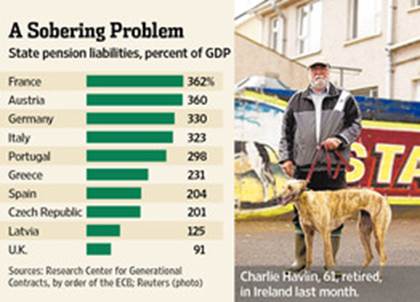For expats who still regard Britain as their ultimate home, their worldwide assets remain within the scope of UK inheritance tax even if they are not UK tax resident. UK inheritance tax liability is based on domicile which is different to tax residence. Domicile is a much broader concept of where someone regards as their home. At birth an individual acquires their father’s domicile as their domicile of origin, unless their parents are unmarried in which case they would take their mother’s domicile as their domicile of origin. For those with a domicile of origin in the UK, HMRC argues that it is very difficult to lose your domicile of origin and acquire a domicile of choice elsewhere, and this position is supported by case law.
Example 1
Mr English has a domicile of origin in England. He left the UK in February 2000 to work in Dubai, where he met and married his wife who is from New Zealand.
Mr English does not intend to stay permanently in the UAE and intends to retire somewhere else in the world, possibly New Zealand, and does not intend to return to the UK.
Even although Mr English has been non-UK resident for 12 UK tax years, and does not intend returning to the UK, as he does not intend to live permanently in UAE but will retire somewhere else, he will not have acquired a domicile of choice in UAE. Mr English still has his domicile of origin in England. Consequently, Mr English’s worldwide assets remain liable to UK inheritance tax.
Increased limit on spouse exemption
Until now the position has been exacerbated for expats who marry (or enter into a civil partnership with) a partner with a domicile outside the UK. Where both spouses are UK domiciled then unlimited spouse exemption applies on lifetime gifts between spouses or where everything is left to the surviving spouse on death. However, where one spouse is UK domiciled and the other is not, spouse exemption was limited to just £55,000 where the UK domiciled spouse died first. This could result in inheritance tax on the first death where the non-UK domiciled spouse inherited assets exceeding £380,000 (being the combined nil rate threshold of £325,000 and the limited spouse exemption). Inheritance tax would be payable at 40% on the excess. Where the non-UK domiciled spouse inherited and held UK situated assets a ‘double whammy’ could result as those assets could then be liable to further UK inheritance tax on their death.
From 6th April 2013, the limit on spouse exemption has increased to £325,000 on assets passing from a UK domiciliary to their non-UK domiciled spouse. This is in addition to their available inheritance tax nil rate threshold, which remains £325,000. A total of £650,000 of assets can now pass tax free to the surviving non-UK domiciled spouse.
Electing to be UK domiciled
While the increased spouse exemption limit is helpful, it may not be enough to eliminate the inheritance tax liability for all couples who find themselves in this situation.
In a further change to the rules, where a non-UK domiciliary receives or inherits assets from their UK domiciled spouse, they can now elect to be UK domiciled for inheritance tax purposes. The most likely scenario in which this election would be exercised is when their UK domiciled spouse died and the value of the assets they inherit exceeds the combined nil rate threshold and the limited spouse exemption so that there would otherwise be a UK inheritance tax bill. In these situations, the surviving spouse has two years following the death of their spouse to elect to be UK domiciled. The election applies for inheritance tax purposes only, and does not affect their tax residence, or require them to reside in the UK or to be able to reside in the UK.
The election enables unlimited spouse exemption to apply and would thereby eliminate the UK inheritance tax liability on the first death where everything is passing to the surviving spouse. However, the surviving spouse’s worldwide assets would then be subject to inheritance tax on their death. Previously, as a non-UK domiciliary, it would only be their UK situated assets which would have been liable to UK inheritance tax. Consequently, making the election could result in a larger overall inheritance tax bill in the future on the couple’s combined assets. Electing to be UK domiciled will depend on the value of the couple’s assets, where they are situated and how they are held.
The election to be UK domiciled is permanent but would lapse if the surviving spouse is non-UK resident for four complete tax years in the future following the election.
Example 2
Mr English’s assets are valued at £800,000. Mrs English has £300,000 of assets outside the UK. Mr English dies and leaves his assets to his wife. Mr English did not make any gifts in the previous seven years and his inheritance tax nil rate threshold is available in full.
Mrs English inherits £650,000 of assets free of inheritance tax (Mr English’s nil rate threshold plus the limited spouse exemption). There would be an inheritance tax charge at 40% on the balance of £150,000. The total inheritance tax bill on Mr English’s death is £60,000. If Mrs English later transferred all assets from the UK there would be no UK inheritance tax on her death. The total UK inheritance tax on their combined assets would be £60,000.
If Mrs English elected to be UK domiciled there would be no inheritance tax to pay on Mr English’s death. Following the election to be UK domiciled, Mrs English’s worldwide assets together with the assets she inherited would total £1,100,000 and all would be within the scope of UK inheritance tax. On Mrs English’s death her nil rate threshold of £325,000, together with her spouse’s nil rate threshold of £325,000 could be transferred and set against her assets, with inheritance tax at 40% payable on the balance. The inheritance tax bill would be £180,000.
Here the inheritance tax bill is higher if Mrs English elects to be UK domiciled. A lower overall inheritance tax bill results if Mrs English does not exercise the election and pays the inheritance tax on the first death. If Mrs English elected to be UK domiciled but then remained non-UK resident, four UK tax years following her husband’s death any future UK inheritance tax liability would lapse.
Conclusions
Expats still have to think about their UK inheritance tax exposure even if they have not been UK resident for many years. For expats married to a non-UK domiciliary, the limited spouse exemption could often result in inheritance tax on the first death. The new rules help eliminate potential inheritance tax liabilities on the first death, and, for some couples, will mitigate inheritance tax on the second death as well.
While electing to be UK domiciled under the new rules this will eliminate any inheritance tax liability on the first death, but it is important to think ahead to tax liabilities on the second death. Where the non-UK domiciled spouse will remain non-UK resident exercising the election may be a good solution, and it should be possible to insure the potential tax exposure on the second death until this lapsed four tax years later. Where expats return to the UK with a non-UK domiciled spouse then relying on the election could reduce the amount the couple could pass down to their children in the longer term, and lifetime planning would be more important.



